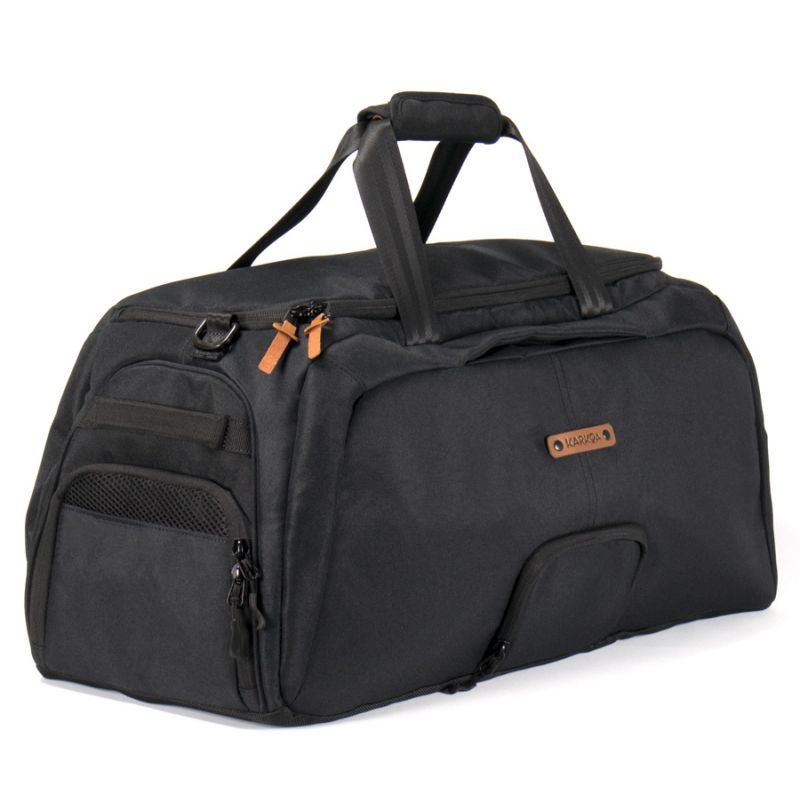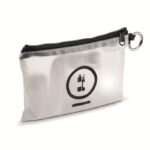Everyone agrees that warming up is an essential step before starting any sporting activity. But do you know exactly why? We warm up differently depending on the sport we play, the intensity of the training session or competitive match, and even our age.
Here are a few warm-ups adapted to handball.
What is the purpose of a warm-up?
The human body is like a machine. You can’t ask it to go from a state of rest to intense activity straight away. The muscles and joints will not be able to deliver their full power. The heart cannot change rhythm too quickly without risk. If you exert yourself too intensely too quickly, instead of being efficient, you risk injury.
The aim of the warm-up is therefore to use exercises to gradually increase the heart rate and warm up the muscles and joints. It is only when the body temperature is between 38°C and 39°C that it reaches its optimum performance level.
For a warm-up to be effective, the muscles need to be subjected to a medium-intensity effort for around ten minutes. As it is important to tone and stretch the muscles for greater efficiency, the warm-up is then followed by exercises and games. In this way, participants gradually improve their skills and coordination.
To sum up, the warm-up serves to :
- Bringing the body up to its optimum level of performance.
- Improving movement and precision.
- Improve muscle tone.
- Prepare yourself mentally for the effort ahead.
- Preventing injuries.
Handball-specific exercises for a fun warm-up
Not all players use the same body parts in handball. The goalkeeper, for example, may do exercises in common with the other players, but he will also need to do a warm-up adapted to his role. Here are a few examples of the many exercises that can be used to warm up for handball.
Example of a handball warm-up video
Handball warm-up games for all players
The dodge ball
The main aim of this exercise is to stimulate blood circulation. It also allows players to work on the changes of direction common in handball, while maintaining solid footing.
The exercise takes place in the goal area of the pitch. Six to eight players are divided into two groups, the hunters and the hares. The hunters try to hit the hares’ backs with the ball and the hares try to avoid it. When a hare is hit, the roles are reversed and it becomes the hunter. In the basic exercise, there are only two hunters. You can then vary the game by designating three or four hunters, enlarging the playing area or allowing the hunters to pass the ball to each other in order to hit the hares, for example.
The counter-attack pass
Two forwards pass the ball continuously without dribbling while defenders try to intercept the ball. The attackers have to get as far as the penalty spot without getting the ball caught. This exercise is great for practising accurate passing and shooting at goal.
The chase
One-on-one in a defined area, the defender tries to touch the attacker’s back with the ball. When this happens, the roles are reversed. Each exercise lasts around twenty seconds. To make the exercise a little more challenging, the zone can be reduced, the attacker forced to dribble or two defenders against one attacker.
Goalkeeper warm-up
After taking part in a collective warm-up, the goalkeeper will be able to practise a few exercises adapted to the role he will play next. He needs these exercises because his movements are different from those of the other players. They need to work on their balance, speed of movement and coordination. The aim is for the goalkeeper to concentrate and prepare to anticipate moves and improve his motor skills.
To prepare the goalkeeper, you need to go through a slow, medium, then fast and very fast rhythm. It’s important to go gradually. Exercises with sudden changes of direction too quickly can be particularly traumatic for muscles and joints and lead to injury.
Working on travel
The goalkeeper takes up a position in the centre of a square marked out on the ground by strips or studs. He has to move faster and faster to the left and to the right. But each time he moves to the left, only his left foot must leave the square and each time he moves to the right, only his right foot must leave the square. On the return movement, both feet must be inside the square.
The exercise lasts three times 30 seconds. Each time, the number of times you pass through the centre of the square should increase. To increase the intensity of the exercise, you can add a handball to catch or a tennis ball to catch and return.
Working on coordination
The goalkeeper and another player face each other. The player throws shoulder-high pieces of furniture at the goalkeeper. The goalkeeper must catch them and throw them back as quickly as possible. The goalkeeper must only move in a chassé movement. As soon as the goalkeeper has caught a piece of clothing, the player must throw him another.
The exercise can be made more complex by varying the height of the throws, throwing several times from the same side or tying a knot in the chasuble to make it heavier and therefore faster.
Working on reflexes and posture
The goalkeeper stands facing a wall one metre away. A player behind him throws a ball against the wall. The aim of the goalkeeper, who cannot see where the ball will be thrown, is to intercept it before it returns to the thrower. To increase the difficulty of the exercise, the player can vary the height, direction and power of the throws.
Handball warm-up before a match: How do you warm up before a match?
As a general rule, while a warm-up is essential before a match, it should not last too long either, as there is a risk of fatiguing the body rather than bringing it up to its best performance level, and thus obtaining the opposite effect to that sought.
The warm-up before a match therefore generally lasts between twenty and thirty minutes and can be broken down into several phases.
Phase 1
In the first phase, the players will begin with balance games lasting around five minutes. This gradually increases muscle activity and works the joints.
Phase 2
This is followed by five to seven minutes of games involving races of progressively increasing intensity with changes of direction. The aim is to work on motor skills.
Phase 3
During the third phase, which also lasts five to seven minutes, duels between the players and goalkeepers are included. The aim is for both players and goalkeepers to prepare for the sequences of play that follow. The exercise must naturally be adapted to the level of the players and goalkeepers.
Phase 4
Finally, the last phase of the pre-match warm-up consists of playing out real-life situations. Known and prepared scenarios are set up to be played out. This allows the players to find themselves in situations similar to those they will encounter during the match and to finish by getting them in the physical and mental condition to play. These exercises last between five and seven minutes.
Choosing the right sports bag for handball
Whether you’re heading to the gym for a workout or off to a competitive match, you need a handball bag fit to carry all your stuff.
Karkoa handball bags will meet all your expectations. Made from tough, water-repellent 600 denier polyester fabric, they’ll stand up to all your demands.
If you prefer a classic handball bag, the Tepee is for you. A large central pocket and multiple pockets and compartments (including a shoe compartment, a waterproof bag for wet clothes and an insulated compartment that can hold a bottle of water) allow you to organise all your gear, sports kit, spare clothes, towels or toiletries separately.
If you’re more of a backpacker, or if you ride a bike or use public transport, the Smartbag also has plenty of closed compartments. There’s a reinforced compartment for your laptop or tablet and all your work gear.
















